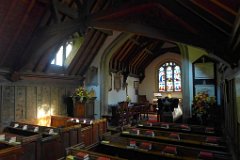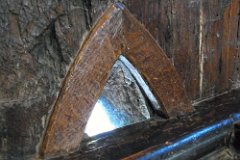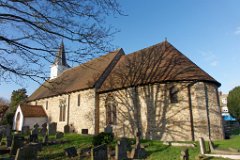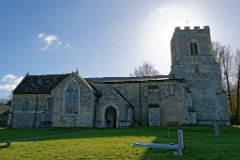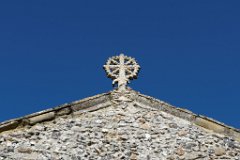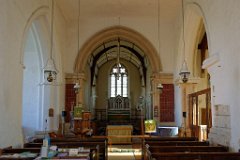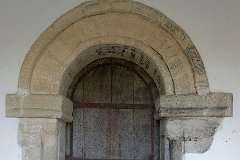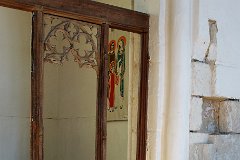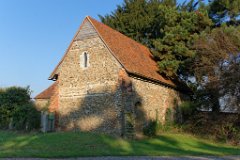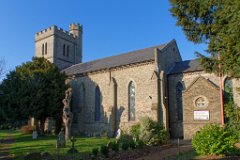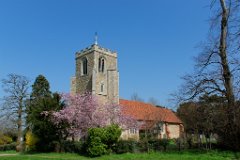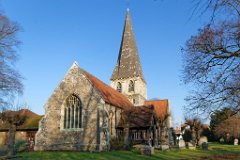75 / 128
Hadstock - St Botolph - Interior
Internally the church is very interesting. The Saxon nave, lit by small double-splayed windows in their original frames, is suprisingly tall. To the east and west are the transepts. Initially there was a central tower but this fell down (probably in the 13th century) following which the arches were rebuilt using the original materials. The south arch is complete to the abaci and contains Saxon leaf pattern carving on the capitals; but apart from the base, the north arch is 14th century. The screen to the south transept is 15th century. The chancel has reen rebuilt several times, most recently in 1884, with a chancel arch similar in style to the transept arches.
Aesthetically, the interior of St Botolph's lacks cohesion and grace. The building is huge and must be difficult to fully occupy, however the church authorities have made things worse by placing an altar and communion rail in front of the chancel arch and adding a piano, reading desk, lectern, microphones and speakers. The clutter fills the floor space but in doing so, somehow brings attention to the smallness and punyness of humanity in the house of God. Perhaps that's a good thing.
